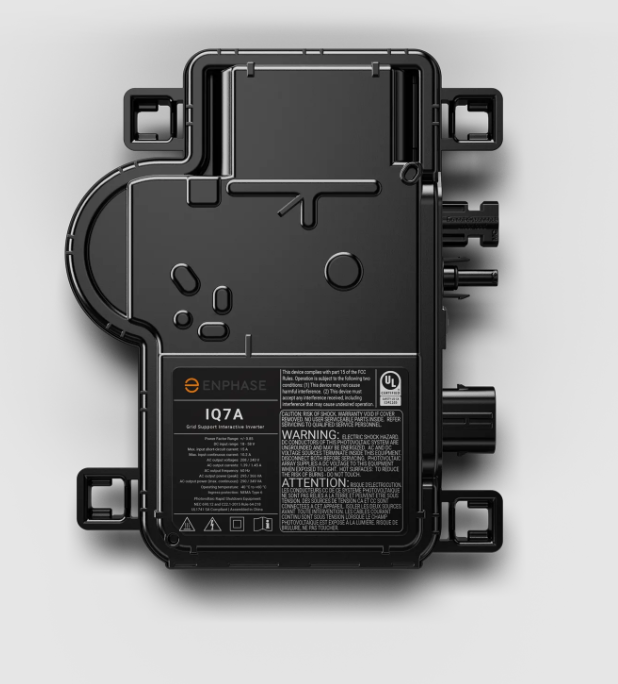India is well on its way to achieving its target of 450 GW of renewable energy capacity by 2030, with solar and wind power leading the way. The country ranked third in the Renewable Energy Country Attractiveness Index (RECAI) by Ernst & Young (EY) in 2021, with the United States retaining its top position, followed by China. The nation reached a cumulative installed PV capacity of 50.5 GW by Dec. 31, 2021, according to Bridge To India.
Driven by the Indian government’s push for solar adoption through its ambitious policies, solar will play a pivotal role in meeting the country’s energy demand. The amount of sunshine that strikes the Earth exceeds the world’s total energy needs. And in recent years, there have been several innovations led by emerging technologies around solar panels, inverters, solar batteries, and control systems that help to automate the process of solar plant monitoring.
Half-cell tech
Simply put, a half cell is a solar cell that is sliced into two. Half-cell technology works on the principle that more PV cells mean less resistance to the flow of electrons in the circuit. A typical 60-cell module will have 120 half cells with only half of the resistance in an array. This means greater efficiency.
Half cell technology helps to circumvent reduced output due to low lighting. These cells are also known to have better durability, as they are not easily prone to micro-cracks due to reduced mechanical stress. Furthermore, they are known to perform in high heat conditions and are less prone to panel malfunction.
Building-integrated PV (BIPV)
In cities where the skylines are filled with skyscrapers, building-integrated photovoltaics (BIPV) panels could easily contribute to the generation of solar energy without detracting from a building’s aesthetic appeal. The versatility of PV glass is perfect for letting daylight enter a building while producing energy. Customized panels that can be fitted into architectural features, such as canopies and terraces, can increase the use of solar energy.
Incorporating transparent PV cells into architecture has many advantages, such as offering unlimited energy, decreased maintenance cost, improved sound insulation, and thermal optimization. It’s a great step toward a zero-carbon footprint.
Floating PV panels
Floating PV modules offer a significant advantage by producing solar energy while freeing up valuable real estate. They can be installed on lakes and reservoirs – recently, a fully operational 48-acre floating solar plant was set up on a large water reservoir in Tuticorin, Tamil Nadu. In Andhra Pradesh, a floating solar project is set to be installed under the Flexibilisation Scheme.
One key advantage of floating solar panels is that water prevents them from overheating, leading to higher electricity production and lower maintenance costs, as the panels also remain dirt-free. The benefits to the environment include lower water evaporation and less algae formation.
Microinverters
A solar system uses an inverter to convert solar energy into electricity. The recent technological advancements in the inverter have led to module-level power electronics (MPLE) or microinverters being introduced, which are far more efficient and safer.
Unlike a string inverter, which has many panels connected to it, a microinverter is connected behind every panel. It offers a “one inverter, one panel” solution. The output from all these inverters is combined in one cable that comes down to the meter box. This ensures that there is no high voltage running through the system, as the AC-DC conversion happens at the panel level, protecting homes and their occupants.
Microinverters function at 96.5% efficiency. If one inverter stops working, the other microinverters continue to operate, maintaining the efficiency of the solar system, without complete power loss.
Another advantage of microinverters is the plug-and-play function, which means fewer screws, ensuring faster installation. The microinverter’s plug-and-play function also helps to make the entire solar system more scalable to suit future energy needs. To ensure that the solar system is protected against dust, sand and water, most systems use equipment that is IP67 certified. This makes the microinverter a safer and more efficient alternative to string inverters.
Solar batteries
Solar batteries allow users access to solar power even when the sun goes down. Depending upon the size of the batteries, it can power anything from a house to a wide range of appliances. Some of the key advantages of using a solar battery are the reduced carbon footprint and greater energy independence. One recent development has been the switch of batteries from lead-acid batteries to lithium-ion. Solar batteries are constantly being innovated to offer a longer lifespan, reduced weight and safety.
Monitoring systems
As technology continues to advance, systems become more integrated. Solar systems now come with their own monitoring system that is easily accessed through an app or the web. Leveraging the Internet of Things (IoT) and the cloud, customers now have access to their solar system via an app. The app will provide insights on the functioning of each device, power generation, and usage to create a smart, energy-efficient solar system. This will also allow service providers remote access to the solar system and reduce site visits.
With countries globally pushing toward decarbonization and tapping into green energy sources, solar is an inevitable aspect of a sustainable future. The advancements in solar technology will be rapid, with technology becoming more versatile. In the coming years, solar technology will become more efficient, safer, and affordable as everyone works towards the goal of having a greener planet. The future is solar-powered.
The views and opinions expressed in this article are the author’s own, and do not necessarily reflect those held by pv magazine.
This content is protected by copyright and may not be reused. If you want to cooperate with us and would like to reuse some of our content, please contact: editors@pv-magazine.com.








Good